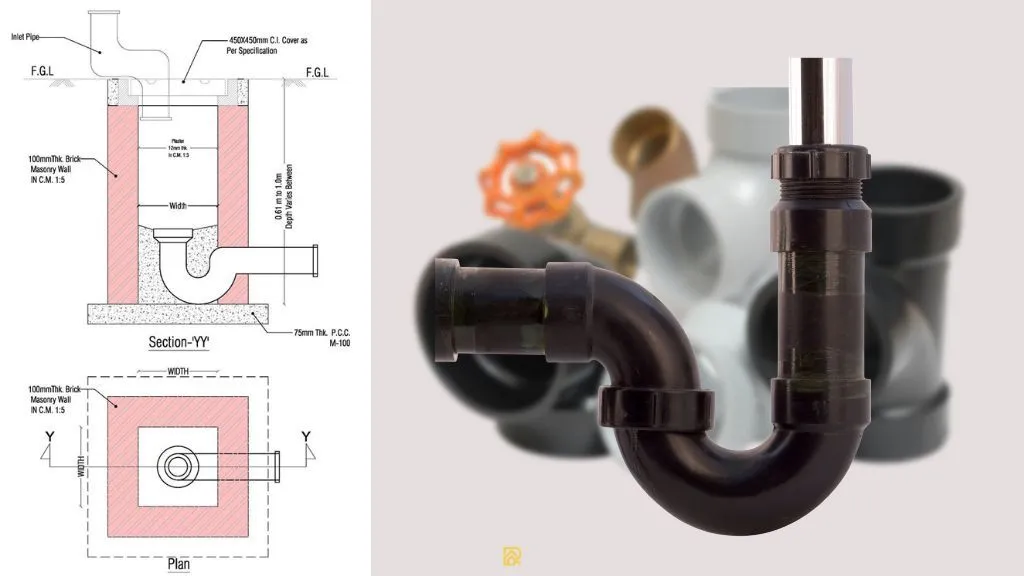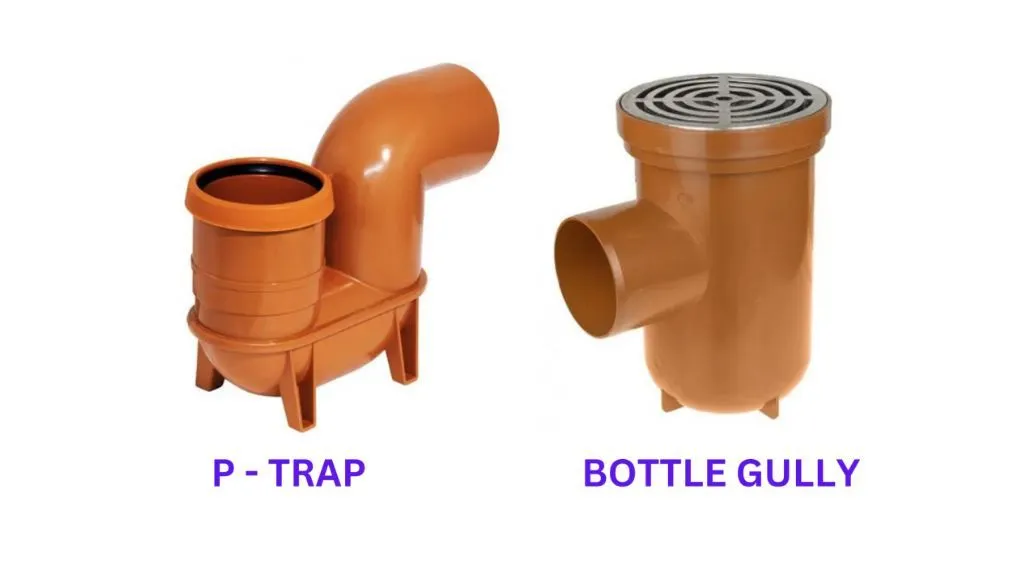Property Geek
We provide the actual and accurate information with unbiased user driven reviews to our viewers, to help them see the best and find the best!
View posts
Plumbing systems can face serious issues like foul odors, blockages, and contamination if wastewater management isn’t handled efficiently. Many homeowners overlook the importance of choosing the right gully trap, leading to these avoidable problems.
Gully traps are essential components that ensure proper drainage and prevent sewer gases from entering your home.
A gully trap chamber should be self-cleaning and it should create adequate velocity from the flow of the water that makes them self-cleaning. A gully trap is placed outside the house or a building before it is connected to the external sewer line.
It also collects waste water from wash basins, kitchen sink, bathrooms, and wash area. In this article, we’ll explore the different types of gully traps and their specific uses in plumbing systems, helping you maintain a clean, odor-free, and efficient drainage system in your home.
Yes, a gully trap is an important component of a building’s plumbing system. It is designed to prevent foul odors and gases from entering the building while allowing wastewater to flow out. The gully trap is essentially a U-shaped bend in the drainage system, which holds water to create a barrier that stops gases from the sewer system from entering the building.
Without a gully trap, the unpleasant odors and harmful gases from the sewer could enter the building, posing a health hazard to occupants. Additionally, the gully trap is an access point for cleaning and maintaining the drainage system, which is crucial to prevent blockages and ensure the smooth functioning of the plumbing system. Therefore, it is essential to have a proper gully trap function in place and to maintain it properly to ensure the health and safety of occupants and the proper functioning of the plumbing system.
Moreover, a gully trap prevents foul odors and harmful gases from entering the building, they also act as a barrier to keep pests like cockroaches and rats out. They also help in draining surface or rainwater and prevent waterlogging in the surrounding areas, which can lead to other issues like the breeding of mosquitoes and other insects.
The depth of the water seal in a gully trap should be a minimum of 50 mm. Also, its total depth should be less than 30 cm and the water depth should be less than 15 mm. It is also important that all gully traps have a cast iron grating 15 cm x 15 cm and it must be fixed in a concrete foundation and installed in a brick masonry chamber. The chamber also has to be air and water-tight. A gully trap must be cleaned at frequent intervals to stop it from choking.
A drain is a system of pipes and fittings that carry wastewater from the building to a sewer or a septic tank. The primary function of a drain is to carry wastewater away from the building and prevent it from flooding or backing up into the building.
On the other hand, a gully trap is a type of drainage trap that is designed to prevent foul odors and gases from entering the building while allowing wastewater to flow out. The gully trap is located outside the building and is designed to collect wastewater from sinks, toilets, and other plumbing fixtures before it is carried away to the sewer or septic tank. It works by creating a water seal that prevents gases and odors from entering the building.

There are two types of gullies: p-trap gullies and bottle gullies. Both of these types of gullies work differently but achieve the same goal. By using a 110mm drainage pipe that is connected to a hopper, the drainage pipe collects the wastewater into a small basket of water at the bottom of a p-trap and then removes the waste into the outlet pipe. One of the disadvantages of the p-trap gullies is that debris gets collected at the bottom, which can cause a blockage.
This is why bottle gillies are the preferred choice. If there’s a blockage in a p-trap, you have to call in the drainage expert to remove the blockage. Also, it is difficult to clean these types of blockages.
A bottle plumbing gully trap works the same way as the p-trap, but it doesn’t have a removable hopper and bottle gully traps are roddable. It is better than a p-trap because it doesn’t collect water in a bucket first. Instead, they have a sleeve inside the lining of a gully that gushes the water into the sewage system. There’s still water present inside the bottle gully, but they are designed for easier cleaning in case a blockage happens
A back inlet gully trap chamber has all the benefits of a normal bottle gully trap but has the added benefit of removing rainwater in large quantities. After rainwater goes into the hopper, it can sometimes cause blockage because in a regular bottle gully trap the inlet pipe is lower than the outlet pipe.
A Back inlet trap addresses this problem. This trap is highly recommended if a large amount of surface water is accumulated and causes frequent flooding.
We’ve already established that a gully trap functions by connecting the drainage pipe to the sewer system. However, sometimes the traps get blocked. If you have a p-trap then it is difficult to clean this trap because of the curvature pipe that doesn’t give access to the rest of the pipe. It takes specialised equipment to clean a p-trap gully completely and flush it out. DIY plumbing and cleaning tricks won’t do the work here.
Bottle gullies are easier to clean as you can remove the inner sleeve and clean the gathered debris, which is causing the blockage.
One of the best ways to clear blocked drains is “Drain jetting.” The flexible jetting hose can enter spaces with less access and tight spaces and the pressure from the hose does all the cleaning. Also, it takes experience to handle a jetting hose. So, always consult a drainage professional to clean out your gully traps.
In addition to drain jetting, there are several other methods to clean a gully trap. One such method is using a drain snake, which involves inserting a long, flexible wire into the drain to break up and remove blockages. However, this method may not be effective in removing stubborn blockages.
Another method is using a plunger, which creates pressure to dislodge the blockage. This method can be effective for minor blockages, but for more severe blockages, a plunger may not be enough.
If you suspect a gully trap blockage, it’s important to address the issue promptly to prevent further damage and potential health hazards. Consulting a professional drainage expert can ensure that the blockage is properly diagnosed and addressed using the most effective methods.
Gully traps are important for a drainage system whether it is a house or a building. It keeps dangerous gases, pests, and rodents away from the house. If not installed properly, it can create an uncomfortable atmosphere in the residential area. We hope this guide will help you better understand gully trap functions.